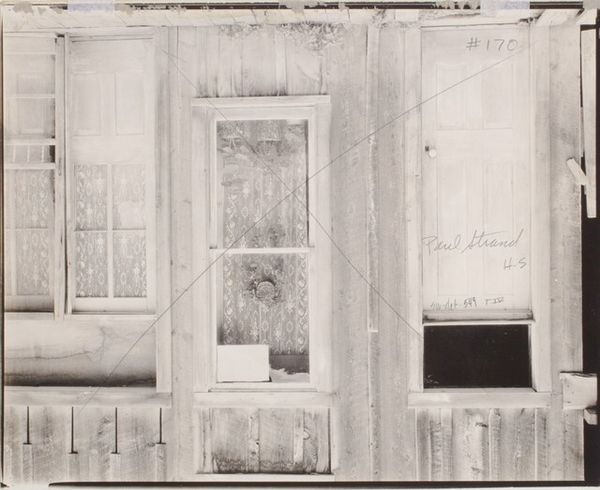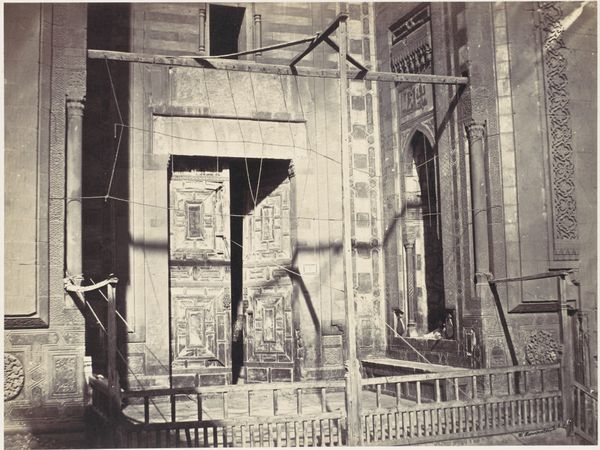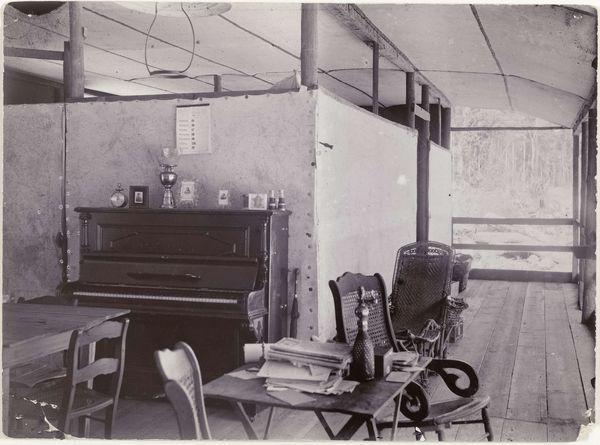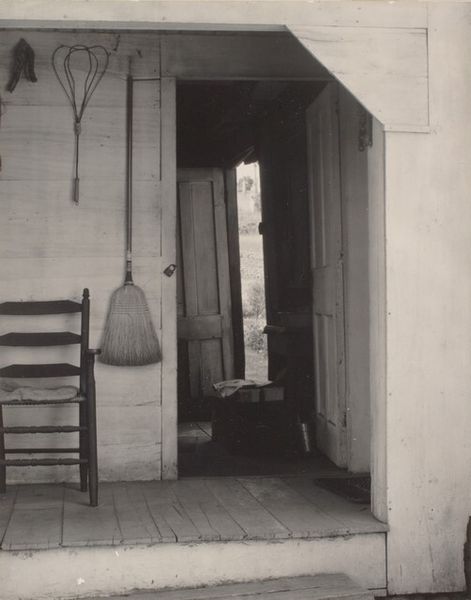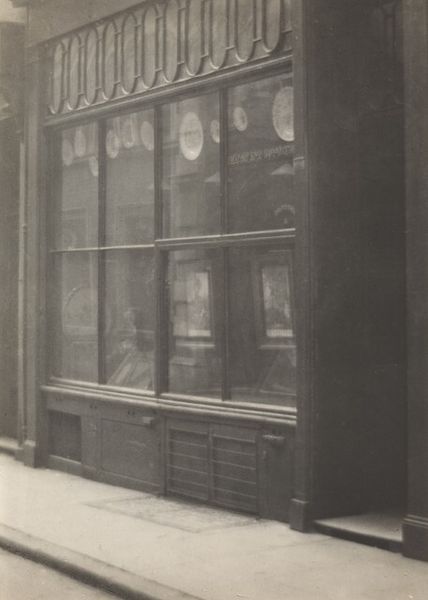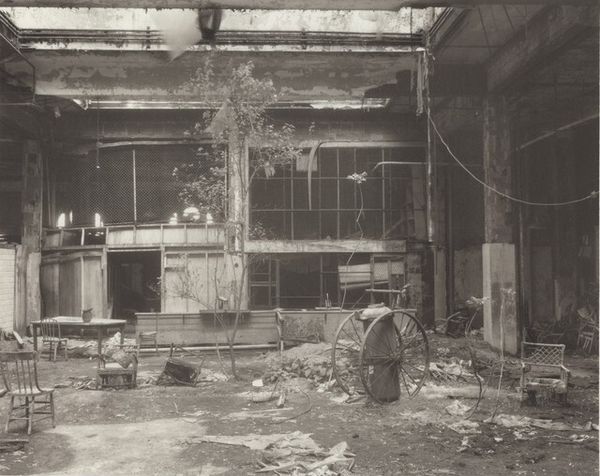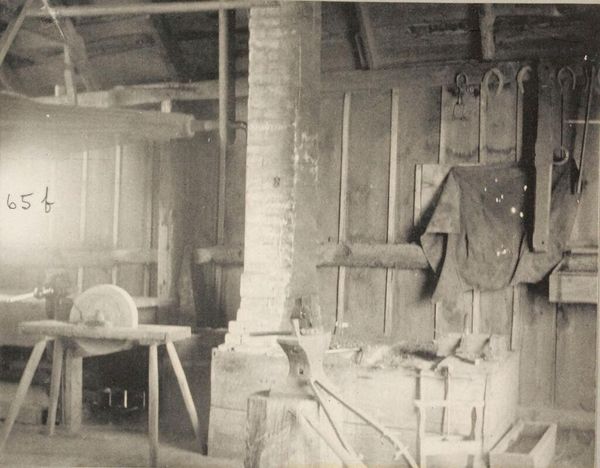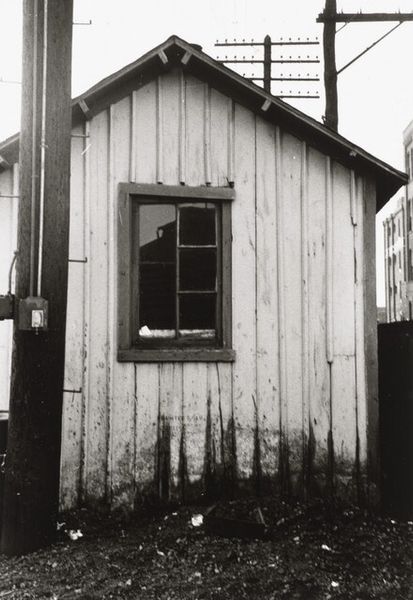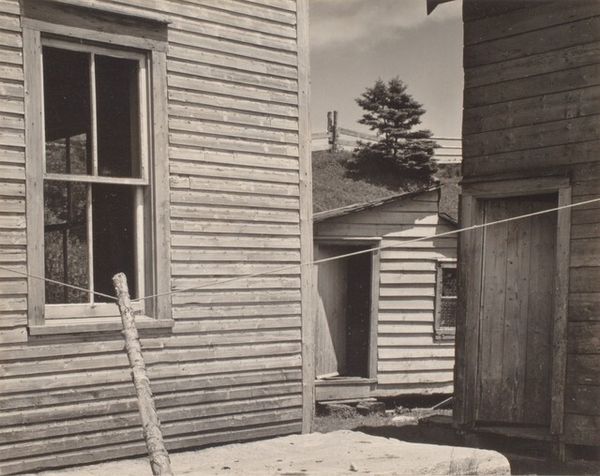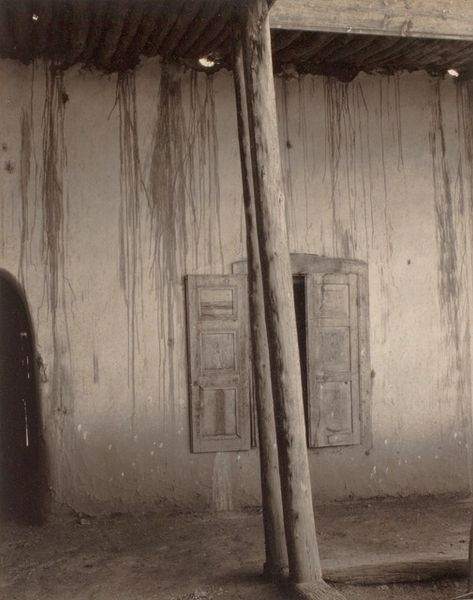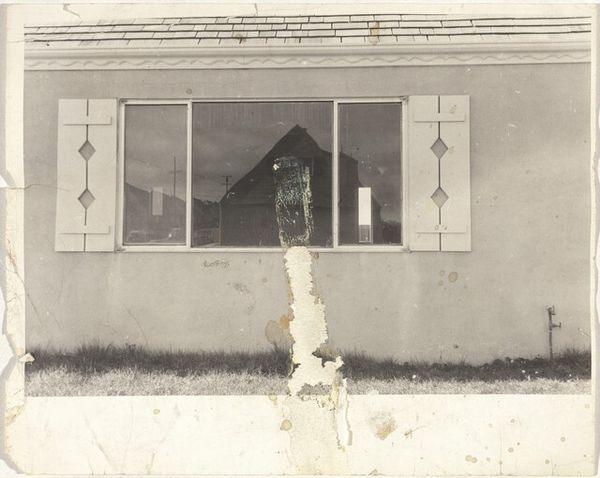![Deserted Building, New Mexico [verso] by Paul Strand](/_next/image?url=https%3A%2F%2Fd2w8kbdekdi1gv.cloudfront.net%2FeyJidWNrZXQiOiAiYXJ0ZXJhLWltYWdlcy1idWNrZXQiLCAia2V5IjogImFydHdvcmtzLzExZjE0NGEyLWE2MGEtNDgyMS05ZTcxLTUwNzA0OTkxOTFkNS8xMWYxNDRhMi1hNjBhLTQ4MjEtOWU3MS01MDcwNDk5MTkxZDVfZnVsbC5qcGciLCAiZWRpdHMiOiB7InJlc2l6ZSI6IHsid2lkdGgiOiAxOTIwLCAiaGVpZ2h0IjogMTkyMCwgImZpdCI6ICJpbnNpZGUifX19&w=1920&q=75)
photography, gelatin-silver-print, architecture
#
precisionism
#
architectural sketch
#
landscape
#
photography
#
gelatin-silver-print
#
architecture drawing
#
modernism
#
architecture
#
realism
Dimensions: image: 19.3 x 24.5 cm (7 5/8 x 9 5/8 in.) sheet: 20.1 x 25.3 cm (7 15/16 x 9 15/16 in.)
Copyright: National Gallery of Art: CC0 1.0
Editor: This is "Deserted Building, New Mexico" a 1931 gelatin silver print by Paul Strand. It has this desolate feel…like a stage set, but the play's long over. What do you see in this piece? Curator: I see a powerful statement on the American landscape during the Depression era, don't you think? Strand, known for his sharp focus and formal compositions, often documented the effects of social and economic forces on communities. Consider the history of New Mexico: a place of Indigenous inhabitation, Spanish colonization, and later, US expansion. Editor: That's interesting…so the abandoned building speaks to that? I was just thinking about the composition itself. Curator: Exactly. The deserted building transcends being merely architecture; it’s a symptom. Its state of disrepair points to larger socio-economic issues, and the displacement that characterized the time. How might we connect the visual austerity of Precisionism –evident in Strand’s stark portrayal– to the lived experiences of marginalized communities then and now? Editor: I guess I hadn’t really thought about the human element that much. The photo is more about shapes and light, but your interpretation makes it more about what happened to the people who lived there. Curator: Precisely. Thinking about Strand's lens, could he be pointing at those power structures at play during the Great Depression? Consider how these power dynamics persist, influencing the stories that get told and, crucially, those that don't. What could an activist's lens teach us about seeing art? Editor: It definitely shifts the focus to a bigger story, makes me consider who benefited and who was left behind in this picture of supposed progress. Curator: Absolutely. Art becomes a space for critical engagement. Editor: Thanks, I'll never look at it the same way again. Curator: My pleasure! Art history should ignite conversation, not shut it down.
Comments
No comments
Be the first to comment and join the conversation on the ultimate creative platform.
